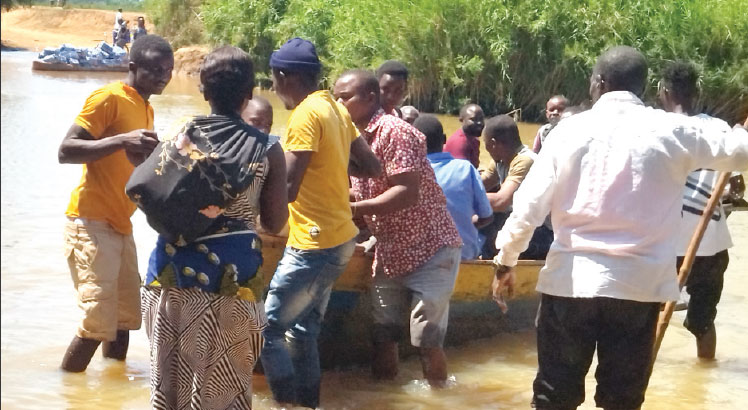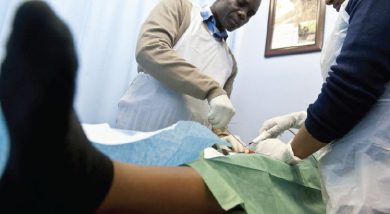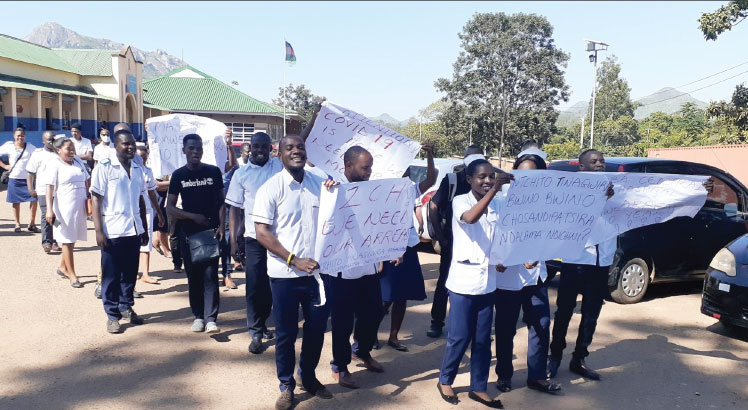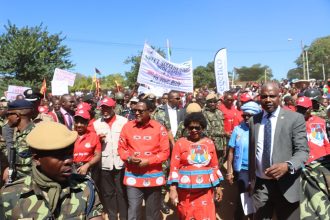New technologies in times of vaccination campaigns
M
takisha River is a source of misery for most residents of Pusi in Karonga North. The river dissects Kalongelera Village in Traditional Authority (T/A) Kilupula into two, leaving half almost unreachable.
The area has no proper roads. There is no bridge across the river to connect the two areas. Yet they are rich in rice, groundnuts and livestock farming.
Businesspersons have since taken advantage of the situation to operate on the river. However, in the rainy season, the river floods. This renders the area impassable, paralysing all farming and development activities.
The recent national immunisation campaigns against polio faced hiccups in the area due to this situation.

Atupele Health Centre health surveillance assistant (HSA) Amon Mwandundu from Kalongolera Village bears testimony.
He says: “The issue of transport is the biggest problem in the campaign,” says the HSA who had a target of reaching 720 children in the third round of the campaign earlier this month.
“I live far away from my catchment area and the health facility. And I use a bicycle to do my work, especially in giving updates to government on how the campaign is progressing.”
In the first two rounds of the campaign, Mwandundu cycled for one and a half hour from the village to the health centre to deliver results of the campaign.
“At the river, I was also paying K1 000 for a return trip, which proved difficult for my work. I couldn’t manage to spend K1 000 every day. And this meant I couldn’t give reports on how the campaign was progressing,” he says.
Noting such challenges, the United Nations Children’s Fund (Unicef) in partnership with the Ministry of Health (MoH) introduced a phone application called Rapid Pro to address such challenges in the third round of the campaign.
Through the initiative worth $500 000, Unicef procured 11 000 phones for HSAs involved in the campaign. The phones have a built-in application which captures and sends data in real time wherever the HSAs are, irrespective of network coverage.
The data is sent to the MoH National Rapid Pro Dashboard – a platform where the raw data is triangulated and made accessible for everyone.
Unicef advocacy and partnerships specialist Shorai Ng’ambi says the technology was introduced to record data in real time.
“In the last two campaigns, even though they were successful, we noticed that it was a problem to get data instantly. People were not able to submit data whenever they were in the field,” she says.
Ng’ambi says the App will therefore help HSAs to send data instantly and help the MoH in decision making as the campaign progresses.
“It is a low-cost App that has been added on the phone and it is user-friendly. We have since trained all HSAs on how to use it,” she says.
Reports indicate that similar applications have worked before in other developing countries such as Malawi.
“Our interest is to have the numbers. There are numbers we want to achieve. And we need to know such numbers on a daily basis,” says Ng’ambi.
Data sourced from the Rapid Pro Dashboard indicates that the ministry has vaccinated 3 341 980 children out of the targeted 3 381 747, representing a 99 percent success rate.
The massive nationwide campaign comes on the backdrop of a confirmed case of wild poliovirus detected in Lilongwe in February this year. This is the first detected in Africa more than five years. In Malawi, this was the first case in 30 years.
Neighbouring Mozambique has since confirmed four cases.
As such, Unicef, World Health Organisation (WHO) and partners launched nationwide vaccination campaigns in Malawi and neighbouring Mozambique, Zambia and Tanzania.
Unicef regional director for Eastern and Southern Africa Mohamed Fall says people mostly contract polio when they drink water contaminated with faeces of someone carrying the virus. He says children under the age of five and those living in areas with poor sanitation are most at risk.
“A regional response is vital as polio is extremely contagious and can spread easily as people move across borders.
“There is no cure for polio, but the vaccine protects children for life. We are working with the World Health Organisation and other partners to make sure parents as well as community and religious leaders, know how important it is that every child receives their vaccine,” he says.
According to Unicef, the previous two mass vaccination rounds were of low quality as only five districts out of 28 in round one and nine districts out of 28 in round two passed the Lot Quality Assurance Survey.
WHO representative in Malawi Neema Rusibamayila Kimambo says the circulation of the virus will only be interrupted if the country delivers quality vaccination strategy.
“I urge all front-line workers and in particular vaccination teams to visit all houses, churches, markets, schools, and communities along the international border to ensure that all children less than five years old are vaccinated,” says Kimambo.
Minister of Health Khumbize Kandodo Chiponda says in addition to supplementary immunisation, Malawi is intensifying routine immunisation and surveillance.
“Even though our routine immunisation indicators at national level are good, we are continuing to improve access and utilisation of routine immunisation services to achieve coverage of at least 90 percent for all antigens,” she says.
As for Mwandundu, the phone App is an integral part in improving access as he will spend less time in travelling to deliver data than in immunising children.






One Comment